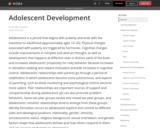
Text and links to all ancillary materials for Module 26
- Subject:
- Psychology
- Social and Behavioral Sciences
- Material Type:
- Module
- Reading
- Teaching/Learning Strategy
- Author:
- Jennifer Lansford
- Date Added:
- 05/31/2021

Text and links to all ancillary materials for Module 26
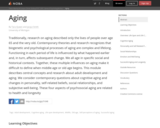
Text and links to all ancillary materials for Module 28

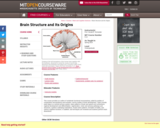
This course provides an outline of vertebrate functional neuroanatomy, aided by studies of comparative neuroanatomy and evolution, and by studies of brain development. Topics include early steps to a central nervous system, basic patterns of brain and spinal cord connections, regional development and differentiation, regeneration, motor and sensory pathways and structures, systems underlying motivations, innate action patterns, formation of habits, and various cognitive functions. In addition, lab techniques are reviewed and students perform brain dissections.

Survey of principles underlying the structure and function of the nervous system, integrating molecular, cellular, and systems approaches. Topics: development of the nervous system and its connections, cell biology or neurons, neurotransmitters and synaptic transmission, sensory systems of the brain, the neuroendocrine system, the motor system, higher cortical functions, behavioral and cellular analyses of learning and memory. First half of an intensive two-term survey of brain and behavioral studies for first-year graduate students. Open to graduate students in other departments, with permission of instructor.
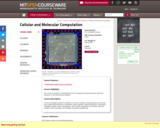
Life as an emergent property of networks of chemical reactions involving proteins and nucleic acids. Mathematical theories of metabolism, gene regulation, signal transduction, chemotaxis, excitability, motility, mitosis, development, and immunity. Applications to directed molecular evolution, DNA computing, and metabolic and genetic engineering.
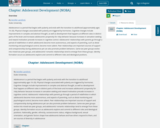
By Jennifer Lansford, Duke University. Adolescence is a period that begins with puberty and ends with the transition to adulthood (approximately ages 10–20). Physical changes associated with puberty are triggered by hormones. Cognitive changes include improvements in complex and abstract thought, as well as development that happens at different rates in distinct parts of the brain and increases adolescents’ propensity for risky behavior because increases in sensation-seeking and reward motivation precede increases in cognitive control. Adolescents’ relationships with parents go through a period of redefinition in which adolescents become more autonomous, and aspects of parenting, such as distal monitoring and psychological control, become more salient. Peer relationships are important sources of support and companionship during adolescence yet can also promote problem behaviors. Same-sex peer groups evolve into mixed-sex peer groups, and adolescents’ romantic relationships tend to emerge from these groups. Identity formation occurs as adolescents explore and commit to different roles and ideological positions.
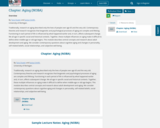
By Tara Queen and Jacqui Smith, University of Michigan. Traditionally, research on aging described only the lives of people over age 65 and the very old. Contemporary theories and research recognizes that biogenetic and psychological processes of aging are complex and lifelong. Functioning in each period of life is influenced by what happened earlier and, in turn, affects subsequent change. We all age in specific social and historical contexts. Together, these multiple influences on aging make it difficult to define when middle-age or old age begins. This module describes central concepts and research about adult development and aging. We consider contemporary questions about cognitive aging and changes in personality, self-related beliefs, social relationships, and subjective well-being.
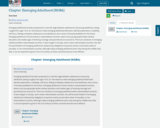
By Jeffrey Jensen Arnett,Clark University.Emerging adulthood has been proposed as a new life stage between adolescence and young adulthood, lasting roughly from ages 18 to 25. Five features make emerging adulthood distinctive: identity explorations, instability, self-focus, feeling in-between adolescence and adulthood, and a sense of broad possibilities for the future. Emerging adulthood is found mainly in industrialized countries, where most young people obtain tertiary education and median ages of entering marriage and parenthood are around 30. There are variations in emerging adulthood within industrialized countries. It lasts longest in Europe, and in Asian industrialized countries, the self-focused freedom of emerging adulthood is balanced by obligations to parents and by conservative views of sexuality. In non-industrialized countries, although today emerging adulthood exists only among the middle-class elite, it can be expected to grow in the 21st century as these countries become more affluent.
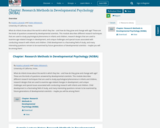
By Angela Lukowski and Helen Milojevich, University of Calfornia, Irvine. What do infants know about the world in which they live – and how do they grow and change with age? These are the kinds of questions answered by developmental scientists. This module describes different research techniques that are used to study psychological phenomena in infants and children, research designs that are used to examine age-related changes in development, and unique challenges and special issues associated with conducting research with infants and children. Child development is a fascinating field of study, and many interesting questions remain to be examined by future generations of developmental scientists – maybe you will be among them!
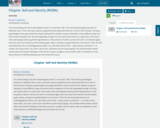
By Dan P. McAdams, Northwestern University.For human beings, the self is what happens when “I” encounters “Me.” The central psychological question of selfhood, then, is this: How does a person apprehend and understand who he or she is? Over the past 100 years, psychologists have approached the study of self (and the related concept of identity) in many different ways, but three central metaphors for the self repeatedly emerge. First, the self may be seen as a social actor, who enacts roles and displays traits by performing behaviors in the presence of others. Second, the self is a motivated agent, who acts upon inner desires and formulates goals, values, and plans to guide behavior in the future. Third, the self eventually becomes an autobiographical author, too, who takes stock of life — past, present, and future — to create a story about who I am, how I came to be, and where my life may be going. This module briefly reviews central ideas and research findings on the self as an actor, an agent, and an author, with an emphasis on how these features of selfhood develop over the human life course.

By Robert Biswas-Diener, Portland State University. The brain is the most complex part of the human body. It is the center of consciousness and also controls all voluntary and involuntary movement and bodily functions. It communicates with each part of the body through the nervous system, a network of channels that carry electrochemical signals.

By Marissa L. Diener, University of Utah. This module focuses on parenthood as a developmental task of adulthood. Parents take on new roles as their children develop, transforming their identity as a parent as the developmental demands of their children change. The main influences on parenting, parent characteristics, child characteristics, and contextual factors, are described.
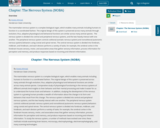
By Aneeq Ahmad, Henderson State University. The mammalian nervous system is a complex biological organ, which enables many animals including humans to function in a coordinated fashion. The original design of this system is preserved across many animals through evolution; thus, adaptive physiological and behavioral functions are similar across many animal species. The nervous system is divided into central and peripheral nervous systems, and the two heavily interact with one another. The peripheral nervous system controls volitional (somatic nervous system) and nonvolitional (autonomic nervous system) behaviors using cranial and spinal nerves. The central nervous system is divided into forebrain, midbrain, and hindbrain, and each division performs a variety of tasks; for example, the cerebral cortex in the forebrain houses sensory, motor, and associative areas that gather sensory information, process information for perception and memory, and produce responses based on incoming and inherent information.
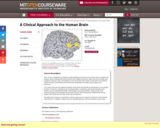
This course is designed to provide an understanding of how the human brain works in health and disease, and is intended for both the Brain and Cognitive Science major and the non-Brain and Cognitive Science major. Knowledge of how the human brain works is important for all citizens, and the lessons to be learned have enormous implications for public policy makers and educators. The course will cover the regional anatomy of the brain and provide an introduction to the cellular function of neurons, synapses and neurotransmitters. Commonly used drugs that alter brain function can be understood through a knowledge of neurotransmitters. Along similar lines, common diseases that illustrate normal brain function will be discussed. Experimental animal studies that reveal how the brain works will be reviewed. Throughout the seminar we will discuss clinical cases from Dr. Byrne's experience that illustrate brain function; in addition, articles from the scientific literature will be discussed at each class.
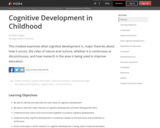
Text and links to all ancillary materials for Module 24

This course enhances cross-cultural understanding through the discussion of practical, ethical, and epistemological issues in conducting social science and applied research in foreign countries or unfamiliar communities. It includes a research practicum to help students develop interviewing, participant-observation, and other qualitative research skills, as well as critical discussion of case studies. The course is open to all interested students, but intended particularly for those planning to undertake exploratory research or applied work abroad. Students taking the graduate version complete additional assignments.

This guide explores the value of student workers in higher education institutions and provides strategies for effectively managing and integrating them into departments. It emphasizes the importance of onboarding, fostering an inclusive environment, professional development, open communication, focused skill development, strategic offboarding, and talent retention. By implementing these strategies, departments can enhance their performance, diversity, and alignment with institutional goals while providing valuable opportunities for student workers' growth and development.
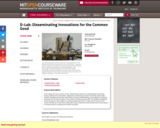
This course focuses on Third World development using case studies and team collaboration. Students draw lessons from success stories and identify challenges, unintended consequences and failures in implementing technologies, projects and policies. Students acquire skills in the building of partnerships and learn how to pilot, implement, and scale-up a selected innovation for the common good. Teams develop an idea, project or business plan that is ready to roll by semester's end.
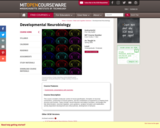
Considers molecular control of neural specification, formation of neuronal connections, construction of neural systems, and the contributions of experience to shaping brain structure and function. Topics include: neural induction and pattern formation, cell lineage and fate determination, neuronal migration, axon guidance, synapse formation and stabilization, activity-dependent development and critical periods, development of behavior.